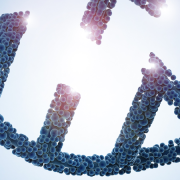Cancer immunotherapy: predicting outcomes
Today’s monoclonal antibody treatments benefit some patients but can be harmful to others; the search for reliable predictive biomarkers is on
Incredible advances have been made in the development of monoclonal antibodies to treat certain cancers, but we’ve a long way to go in understanding who will benefit, writes Alain Li Wan Po.
Early experimentation
“The organism possesses certain contrivances by means of which the immunity reaction, so easily produced by all kinds of cells, is prevented from acting against the organism’s own elements and so giving rise to autotoxins … so that one might be justified in speaking of a horror autotoxicus of the organism. These contrivances are naturally of the highest importance for the existence of the individual.” – Paul Ehrlich, 1901
In his official job as a junior chemist in the laboratory of August Wilhelm von Hoffman at the Royal College of Chemistry in London, William Perkin’s objective was to synthesise quinine – a natural drug much in demand for the treatment of malaria. He failed, but, in 1856, at the age of 18, he synthesised the first aniline dye – mauvine – in his top-floor apartment in East London, and subsequently shot to fame.
By the end of the 19th century, Germany had taken the lead in dye synthesis and physician Paul Ehrlich had refocussed attention on the potential medical applications of synthetic compounds. On observing differential staining of cells and microbes by synthetic dyes, Erlich suggested that it might be possible to develop drugs that would kill microbes and cancer cells selectively. His work led to the development of the first successful anti-syphilitic drug and the first targeted biological therapy against diphtheria – the forerunners of today’s highly successful monoclonal antibodies, tens of billions of dollars of which are sold each year.
Progress in cancer treatment
Among modern monoclonal antibodies, those designed to reactivate the killer function of T cells – so-called immune checkpoint inhibitors – have been particularly effective. Immune check-points are cellular mechanisms for ensuring that the immune system exerts measured and controlled responses when challenged. One example is the interaction between the programmed cell death 1 (PD-1) receptor and its ligand (PD-L1). Activation curtails the T cell autoimmune response, avoiding Ehrlich’s horror autotoxicus.
There are now five inhibitor antibodies targeting PD-1 or PD-L1 licensed for clinical use in the treatment of cancer: nivolumab and pembrolizumab against PD-1, and atezolizumab, avelumab and durvalumab against PD-L1. These inhibitors have shown remarkable efficacy in some cases of hard-to-treat, advanced cancers, and marketing success has followed. Sales for nivolumab reached $3.8m in 2016, less than two years after marketing approval.
The fine line between benefit and risk
Patients’ outcomes have varied considerably, with some individuals showing marked improvement while others show no response: over half in the most successful major trials. Theoretically, PD-1 molecular targeting should work irrespective of cell-type, but recent trials show that this isn’t so. For example, while melanomas respond well, prostate cancers rarely do.
In other therapeutic areas where monoclonal antibodies have been effective – for example in cases of rheumatoid arthritis – the approach has been to reduce the activity of an offending molecule with relatively little concern about over-inhibition, because the short-term adverse consequences are modest. Immunomodulators such as the PD-1 inhibitors, however, are more complicated because unlocking the check-point controls needs to be precise to minimise serious and potentially fatal immune-related adverse effects. Because of the seriousness of potential adverse effects, it is important to be able to identify patients who are most likely to benefit from these therapies, and avoid risk for those unlikely to respond.
Immunotherapy with genomic targeting
Other small molecule targeted therapies (notably kinase inhibitors) provide evidence that mutations in the tumour genome are highly predictive of response to these treatments. Why then have we been less successful at identifying biomarkers predictive of response to PD-1 monoclonal inhibitors? Two answers are likely: first, we know much less about the operation of the immune checkpoints than we would like; second, a wide variety of other differences between patients exists, including genetic factors and treatment history.
In recent trials in advanced non-small cell lung cancer (NSCLC), nivolumab and pembrolizumab were expected to give qualitatively similar outcomes, but in fact showed marked differences. A condition of entry into trials of the inhibitors of the PD-1 axis was tumour-cell expression of PD-L1 assessed by antibody staining. One explanation put forward to explain the discrepancy between nivolumab and pembrolizumab is the difference in the level of expression of the biomarker. However, this biomarker has also been inconsistently predictive. Not only are the results of gene-expression quantification assay-method specific, but there is no consensus on the best assay. Interpretation is further complicated by intra-tumour heterogeneity, which makes estimates of expression-level based on single samplings of tumours imprecise. In the presence of metastases, single-tumour expression levels are unlikely to be representative.
A study of clinical trial reports showed that even randomisation may fail to even out the influence of other factors. For example, in a recent pivotal trial of nivolumab in NSCLC, randomisation was stratified based on PD-L1 expression levels but this did not prevent imbalanced assignments of gender and of subjects with expression levels below 50% – the cut-off level now suggested by experts (manufacturers understandably want to include everyone who might benefit in the trial but it appears that a high PD-L1 expression level is necessary for efficacy). Subjects entered into the trial also reported widely differing levels of exposure to radiotherapy.
Moving towards precision
In the search for more predictive biomarkers, investigators are studying mutation burden – the number of mutations in a baseline tumour sample – particularly in genes associated with DNA repair. While interesting, this approach would not overcome problems associated with estimates from single samples. Estimates based on circulating tumour DNA to provide a PD-1 inhibitor response signature might help, but the technology is, as yet, inadequately tested.
Drugs acting on the PD-1 axis represent a real advance in the treatment of cancer. Using a high expression level of PD-L1 as the eligibility criterion for selection of patients that may benefit has considerable validity. Alternative genomic biomarkers should one day help to build improved mathematical predictors that include both molecular and other patient-specific characteristics such as prior treatment exposures.
Professor Alain Li Wan Po is editor-in-chief of the Journal of Clinical Pharmacy and Therapeutics, and is a fellow of the Royal Pharmaceutical Society and the Royal Statistical Society.
–









